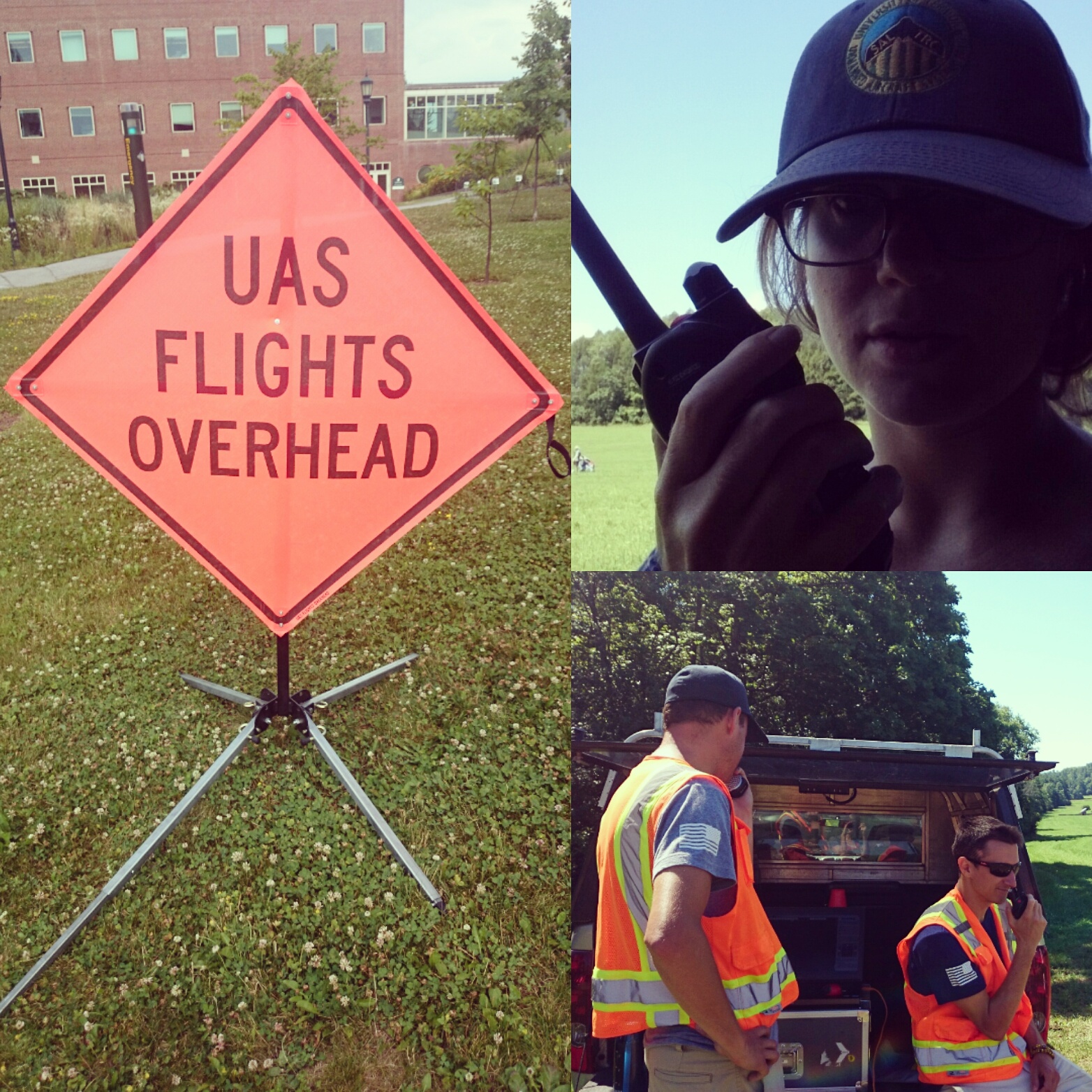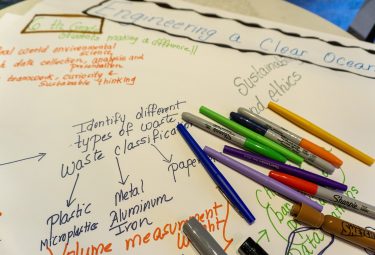Early bird rates are available for registration to the 2026 January ESIP Meeting. Register.
“..what are you doing??” – How to Talk to Strangers About Drones

I work with drones (also known as UAS or UAV – unmanned aerial systems/vehicles), and this is a question I get a lot. It is not typically asked in a forceful or suspicious manner, but I always have a momentary adrenaline rush when I see the curious bystander / no-nonsense groundskeeper / wealthy nearby landowner look up, check out our drone, and start to walk over.
My environmental monitoring research is ongoing at numerous agricultural field sites. One site happens to be on a large, sprawling agricultural estate known for it’s petable baby animals, cheese tasting, beautiful views and great public programming. In other words, there are a lot of people.
After more than 20 drone flights at this site, I have never had a negative experience explaining my research thus far. And I have learned some good ways to engage uncertain onlookers – because let's face it, with this sort of fun looking official activity, who could resist taking a closer look?

Before Drone Flying:
This is a large farm. Even though I’ve already informed people of my ongoing research, I understand that not everyone who works there knows me or my work. Before I fly, I alert the field manager and the person who is in charge of the entry gate to let them know what I’ll be doing (on field monitoring and drone flying) where (both hay fields) and when (approximate timing). This is in addition to all other pre-mission communications and checks (like checking out the FAA's “Before you Fly” app).
Now, back to the moment: “…what are you doing??”
Five Steps for Talking to Strangers About Drones:
Step One: Polite and friendly introduction (ignore their question)
“Hi there, I’m Lindsay Barbieri. I’m from the University of Vermont – I don’t think we’ve met before?”
This lets them know who I am, sets a friendly tone, and gives them a chance to introduce themselves – so I get to know more about who I’m talking with. Is this person just a curious farm tourist? Are they working for the farm in some capacity? Do they have a stake in what happens?
Step Two: Address their question, but big picture style.
“I’m a graduate student, and this is one of my field sites. I’m researching agriculture and climate, and on these fields we are specifically looking at greenhouse gas emissions and water quality indicators.”
Yes, they are staring at the drone in my hand / in flight / on the ground, but I always start with the bigger picture. This gives me a chance to gauge their reaction and interest level. Sometimes they seem genuinely interested in learning more, other times they continue staring at the drone. Either way, they now have a bit of framing so I am good to finally
Step Three: Address the drone
“One of the ways we’re monitoring greenhouse gas emissions on these fields is using this drone. This is a small professional mapping drone. It is taking images of the field so we can better monitor how agricultural practices are affecting our environment, especially with water runoff and greenhouse gas emissions.”
I do use the word drone, I think it is the most accessible. And by putting phrases in like “professional mapping” and “taking images / monitor agriculture” I’m highlighting the use of the drone for research. Then I take a moment and assess: are they still interested? Still uncertain? Either way, it’s a good time to
Step Four: Point out other monitoring
“Do you see the stakes in the field out there? With the yellow tape on top? Those are marking all the points that we measure greenhouse gas emissions on the field as well. We drag around some pretty expensive equipment (can you see that guy in the field dragging a sled?) to get really accurate readings on emissions in the field at the same time. We’re using the drone imagery and pairing it with our on-field measurements to understand these agricultural practices better. This is just one field, but we have two here on the farm that are using different management strategies, and we’re comparing those two fields.”
Okay! Now they have the whole story, and a lot of information to engage with if they are interested.
Step Five: Listen! Let them talk, and answer specific questions. Usually they say things like:
- “Oh. Cool.”
- “It’s so quiet!”
- “How high does it fly?”
- “What sort of gasses are you looking at?”
- “You kids these days are so cool and you give me hope about saving the world that our generation messed up. Thank you.”
- “How will imagery help with gas measurements? …Ok but really, is that going to work? …Ok but even if it does will that be useful? …How are you going to actually look at other places? …Yeah but will that work? …Okay but did you think about…” OKAY OKAY I'M NOT SURE OF ANYTHING I’M STILL DOING THE RESEARCH, JUST WAIT FOR MY DISSERTATION IN LIKE THREE YEARS PLEASE I’LL MAIL IT TO YOU.
In all seriousness, I have only had great experiences talking to all sorts of people about drones and my own drone research. I would like to believe that taking the time to explain my research in an open and friendly way helps to shed light on the positive environmental science that can come from drone based monitoring. At the very least, I can show them the fun we have throwing small robots into the air…
—
Questions? Thoughts? Comments? email: lkbar@uvm.edu
or for more drone related fun & updates, follow me on twitter: @barbieriiv




